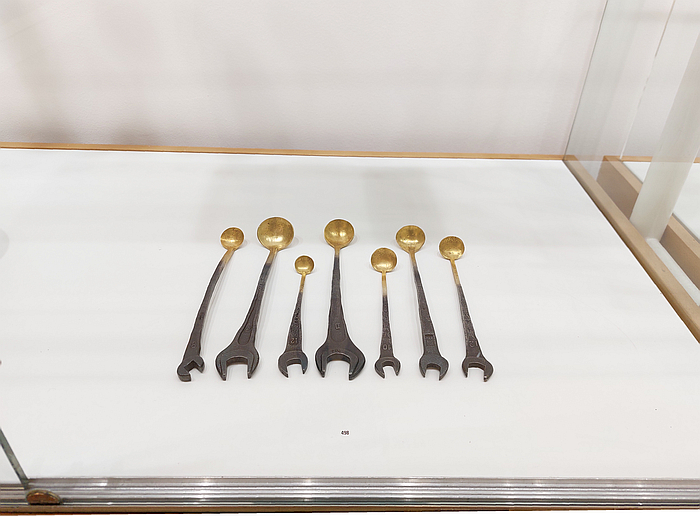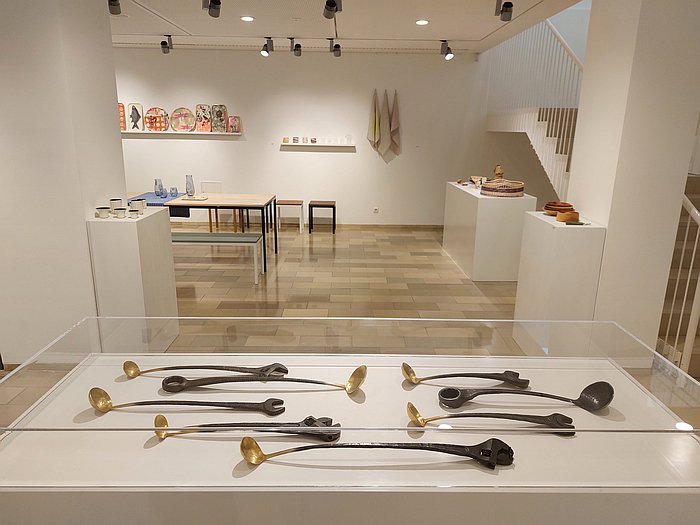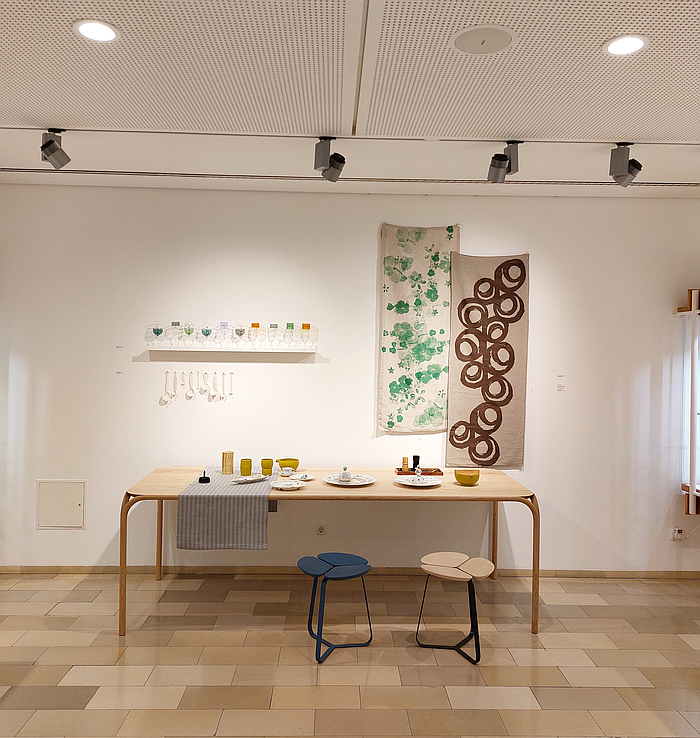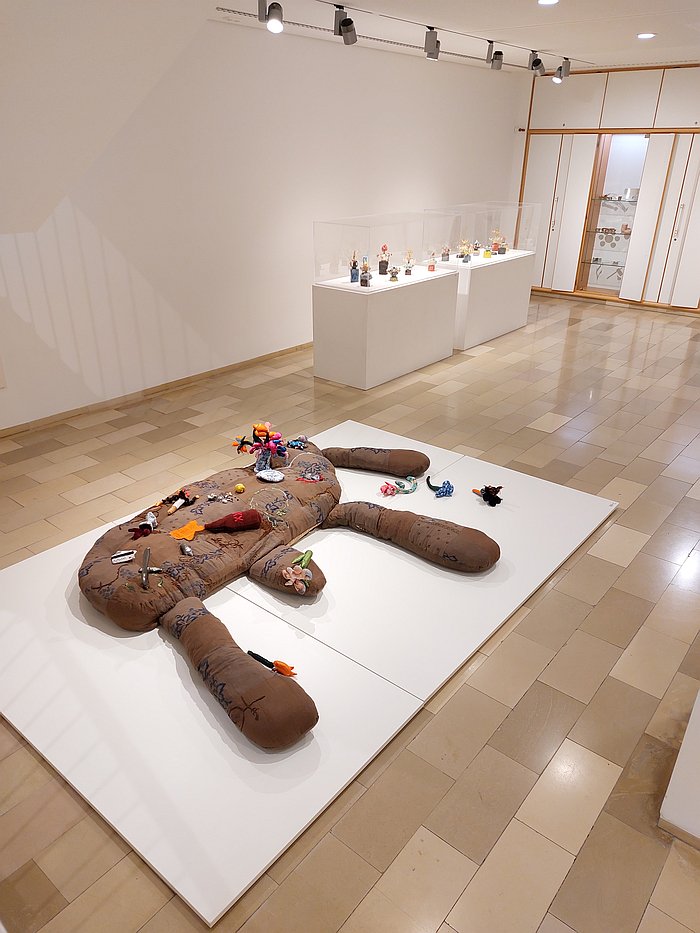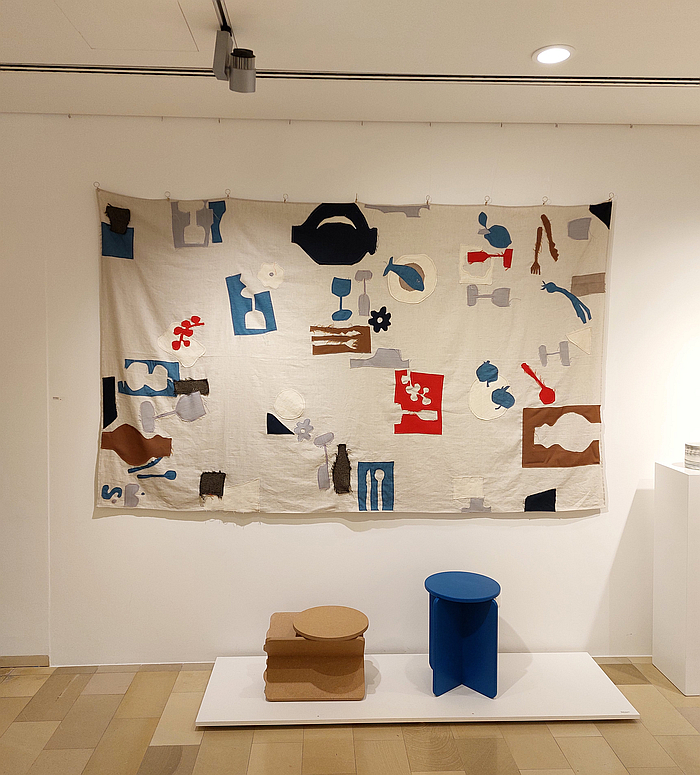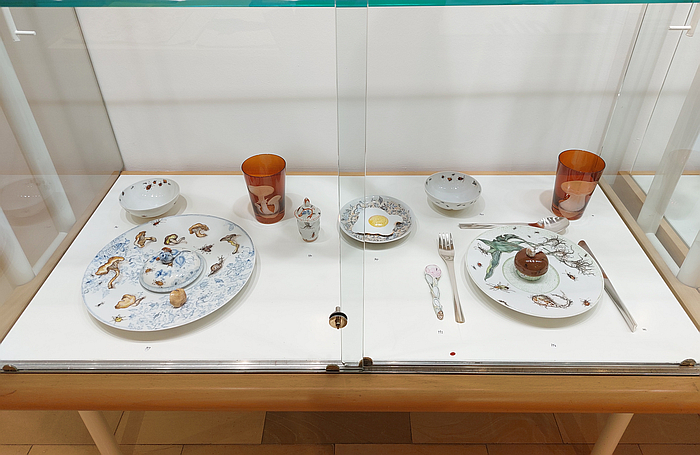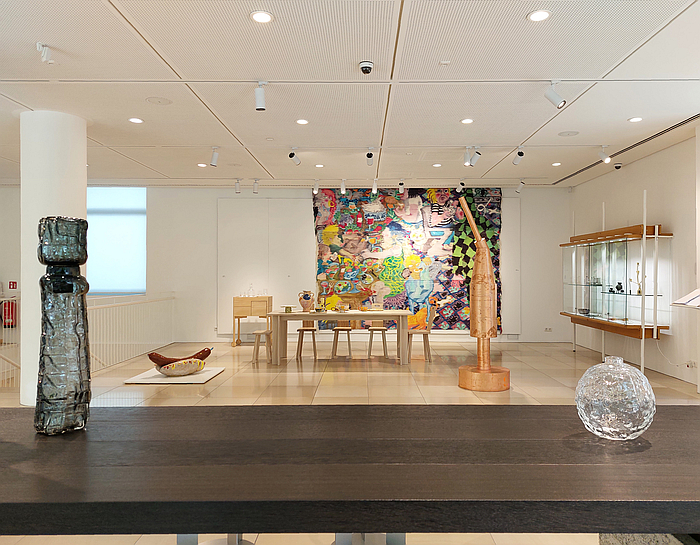
Not only the food and drink one serves is part of a prevailing table culture and by extrapolation part of a prevailing culture, the table being as it is the physical and metaphoric centre of any community and society, but also the objects and tools one employs for serving and consuming that food and drink are part of that, those, culture(s). Whereby, we speak less of the, invariably, invented romanticised folkloric definitions of culture, those cultures imagined as they may have been in the late 19th century, but probably weren't, and which can be experienced globally in all "authentic" restaurants, rather we speak of a contemporary culture hewn from, and thereby hewing, contemporary realities. Of food, drink, and the required objects and tools, hewn from, and thereby hewing, contemporary realities
Whether by deliberate by way of a contribution to Munich Creative Business Week, MCBW, 2025's motto How to design a vibrant community, or by pure good fortune, in their current exhibition the Galerie Handwerk München seek to approach contemporary Tischkultur, table culture, thus a key to any and every vibrant, resilient, durable, community, via a curated presentation of contemporary craft and design works for, or reflecting on, contemporary tables; a presentation that is and was a mix of processes and positions in an equally wide mix of materials, including, for example, the wood of Breitscheid based Tischlerei Sommer with its take on the Stabelle, that universal vernacular chair, and arguably one of the oldest European chair construction principles; the textile designs of New York born, Halle (and Berlin) based Fern Liberty Kallenbach Campbell as represented by the rug Fool and the Tischtier, Table Animal that lies on the ground floor, the latter an object as ambiguous and unequivocal, and as instructive and entertaining, as attempts at deciphering the origins of its name; or ceramics, that, arguably, most readily identifiable material for tableware, in a myriad of expressions ranging from the rounded reduced minimal over the severe unyielding geometric on to the (apparently) unformed naive, the latter including, in our definition of such terms, the work of Nantes based Louise Ferchaud, including her singular take on the Toby Jug of yore, works our forbearers would recognise but not understand, that evidence of how a society's relationships with objects develop just as much as the objects and the society themselves develop. And a Louise Ferchaud who helps underscore the international nature of Tischkultur. Thus allowing access to reflections on the table as an inherently international institution, for all that cuisine is almost always approached as a narrow, national, institution.
And a presentation that, and very pleasingly and satisfyingly so, showcases alongside the work of innumerable private creatives and a number of companies, national German and international European, student works; specifically works by students from the Freie Universität Bozen, the Staatliche Berufsschule für Flechtwerkgestaltung, Lichtenfels, the Staatliche Berufsfachschule für Glas und Schmuck Kaufbeuren-Neugablonz, and the Staatliche Zeichenakademie Hanau, the latter an institution that has been so influential in the development of the craft of the goldsmith, and more specifically in context of tableware, the silversmith, over the 250-ish years of its existence, and whose alumni include creatives as varied as, and amongst many others, Peter Carl Fabergé, Christian Dell or Wilhelm Wagenfeld.
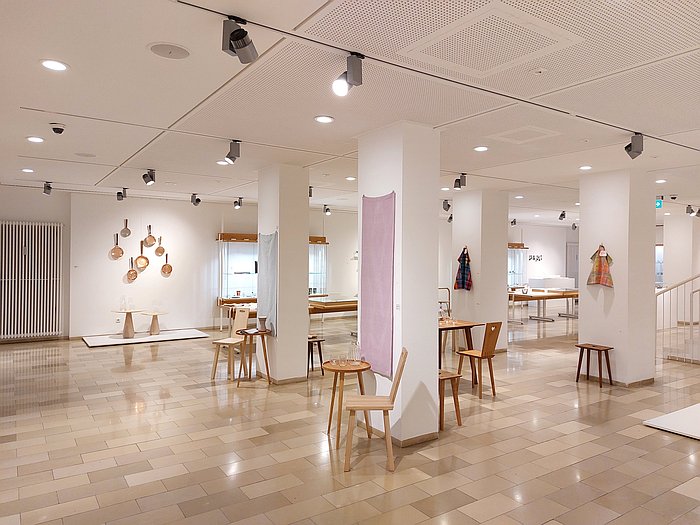
For all that Tischkultur is and was on the one hand about the discourse between the various objects and projects in context of contemporary (table) culture, and on the other an entertaining introduction to the scope of contemporary craft and design practice in Europe as exemplified by objects for a specific theatre of use, it is impossible to view Tischkultur without engaging with some objects more than others. Which is also one of the joys of such presentation, the challenge to communicate with the unfamiliar. Something that is particularly important in context of the fact that the objects on show in Tischkultur are available to purchase, it is a shop as much as an exhibition, a shop one approaches as an exhibition. Which is worth reflecting on while doing so in context of how one consumes one's tableware, and food and drink, in an age of ever more unremitting social media commerce, and in which staging one's table is often more important than gathering others around your table.
For our part our attention was particularly caught by, and amongst other works limits of time and space prevent us from discussing, the XO stool by Munich's own Studio Sonntag a.k.a. Thomas Heckenberger and Roman Schumacher, that via a piece of near criminal simplicity becomes a side table with space for books, magazines et al, if we do admittedly have a couple of questions regarding the stability of the table top, questions we couldn't approach in the institutional confines of Tischkultur, but we're sure could be quickly answered in daily practice, and an XO that we very much see as having the potential to serve as the basis for a family of objects; the cups, beakers, etc, by Hildesheim based Thorben Heuer a ceramist who freely employs contemporary AI and 3D printing in the development and realisation of his apparently so traditional objects, an aspect that regrettably didn't really come across in Tischkultur but which is well worth engaging with.
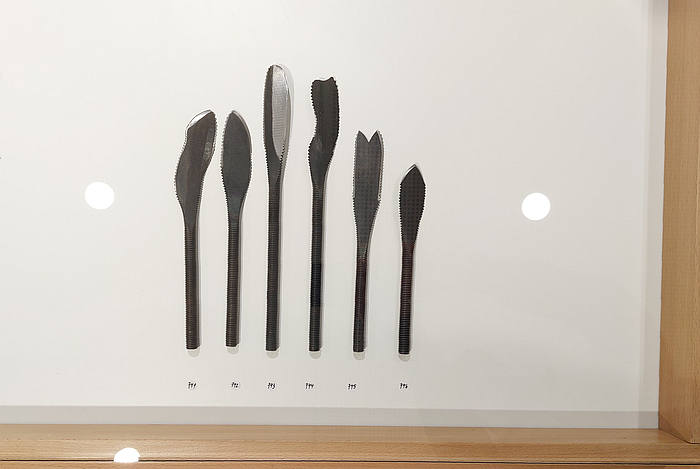
Or the knives of Berlin based, Staatliche Zeichenakademie Hanau alumnus Friederike Maltz, in particular those of the Ich war mal eine Schraube collection, works who, as the name implies, were once, when not necessarily Schraube, screws, were long threaded rods, whose threads Malz has crafted into a serrated edge via a process of deforming. A very neat transformation that you don't have to see happening to follow, but not exactly: you can't visualise how its achieved, but accept it has been, possibly with the help of a little benign sorcery, thus allowing the knives to stand as an example of that mystery, that opaque, that separates craft from industry. And works which not only speak of a deep understanding of a material and the tools of manipulating that material, a deep understanding of the possibilities in the material and tools, but that also speaks of a minium of waste in the production process, of objects whose footprint is much lighter than the physical object. A physical object we sadly couldn't take in the hand to judge the tactility of holding, and the balance in the hand nor the proficiency with which it performs its key function of cutting, spreading, smearing, etc.
Similarly reworking the industrial tools of the past to the household tools of the future via a very pleasing craft transformation are and were the ladles and serving spoons by Tallinn based, Estonian Academy of Arts graduate blacksmith Nils Hint; objects that began life as, and arguably still are, metal, we're assuming iron, spanners, wrenches and their ilk. A collection at two scales, whereby we were much more taken with the smaller examples than with the larger ones, the latter being for a bit too in your face, a little too obvious in what they wanted to express, something the smaller one achieved with a great deal of aplomb and finesse and delight, represent, for us, a very satisfying interplay of power and delicacy, coarseness and refinement, factory and home. If again works we were unable to take in the hand and approach through feel and use.
Which of course is the real test of any and every object of daily use, specifically in context of Tischkultur, any and every object of tableware: does it positively contribute to that which is occurring at and on the table? For all that objects may look good, that doesn't help at the table. Which yes could be considered a metaphor for our primarily visual age.
But is certainly an impulse to take the objects, the projects, the approaches, the positions showcased in Tischkultur as starting points for your own reflections on contemporary table culture, as reflected not only by the works on show in Tischkultur, but also as reflected by the objects available in your local tableware store, and thereby an invitation to simultaneously also reflect on contemporary culture. And on where contemporary (table) culture is taking future (table) culture, where it could take it, and where we want it to take it.
For regardless of the food and drink we serve and of the objects and tools we employ for serving and consuming that food and drink, our tables will remain the physical and metaphoric centre of our communities and societies.
For all in or near Munich Tischkultur is scheduled to run at Galerie Handwerk, Max-Joseph-Straße 4 80333 Munich until Saturday June 14th. Further details can be found at www.hwk-muenchen.de
And further details on Munich Creative Business Week 2025 can be found at www.mcbw.de
